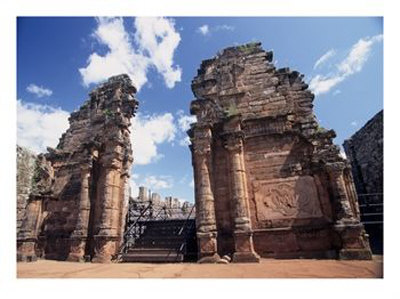 Since the arrival of the Spaniards in the Chaco region of Paraguay, very little has changed. The parched vast plains of the Chaco stretch across the southeastern border of Bolivia, through areas of Argentina, Brazil and Paraguay. Today it still remains, a mostly unexplored, final frontier in South America.
Since the arrival of the Spaniards in the Chaco region of Paraguay, very little has changed. The parched vast plains of the Chaco stretch across the southeastern border of Bolivia, through areas of Argentina, Brazil and Paraguay. Today it still remains, a mostly unexplored, final frontier in South America.
Covering about 250,000 square miles, the Chaco is one of the hottest regions of South America. Seasons of drought and flooding alternate in this land of hard clay soil that makes any type of agriculture almost impossible. And, the area is almost impenetrable due to the enormous amounts of thorns and cactus.
During the early 1930’s, it was believed that the Chaco was rich in oil. And, two of the larger oil companies, Shell and Standard, began exploration of the area. As a result of competition over profits of a potential oil strike, the Chaco War broke out between Paraguay and Bolivia, lasting from 1932 until 1935.
At the time, Bolivia owned more of the Chaco than Paraguay. But, as a result of their defeat, Bolivia ceded their portion of the region over to Paraguay.
Although, hostilities between the two countries continued and didn’t cease until the search for oil proved futile.
The Chaco now makes up about 61 percent of Paraguay’s total area, but while it is the largest section of the country, it is also the least populated. Just a little over 2 percent of the nation’s population brave the harsh conditions of the area and call it home.
From the capital city of Asuncion, you pass through the Low Chaco, a area that has marshes and palm forests and leads to the Middle Chaco. Here there are farms and agricultural outlets set up by Mennonites of German decent. They also set up their own schools and are considered as the only organized community in the entire Chaco area.
While few Paraguayan’s live in the area, it’s a very popular place for tourists to visit. The area is abundant with fauna and flora that can only be found in the Chaco, there are over 300 different types of medicinal plants and over 500 various types of hardwood trees.
The region is also home to various types of wildlife such as jaguars, wolves, pumas, the South American ostrich and numerous types of birds. Visitors can now enjoy horse back riding to large swamps and forested areas that are almost totally unexplored.

{ 0 comments… add one now }